When your brand structure is clear, everything works better. Teams align faster. Customers understand where products fit. Every interaction feels intentional.
Think of brand architecture as your company's blueprint. It guides how different brands connect and work together. Whether you manage one brand or dozens, the right structure creates clarity and drives results.
In this guide, we'll show you how to build brand architecture that strengthens your strategy and creates lasting impact.
What Is Brand Architecture?
Brand architecture is a framework that organizes your company's brands, products, and services. It shows how everything connects under your corporate umbrella.
Good brand architecture creates clear relationships between your brands. It helps customers understand your offerings. It also helps your team make consistent decisions about marketing and messaging.
Companies use brand architecture to build trust with customers. When people recognize your structure, they feel more confident buying from you. This recognition leads to stronger loyalty and better sales over time.
Source: hubspot
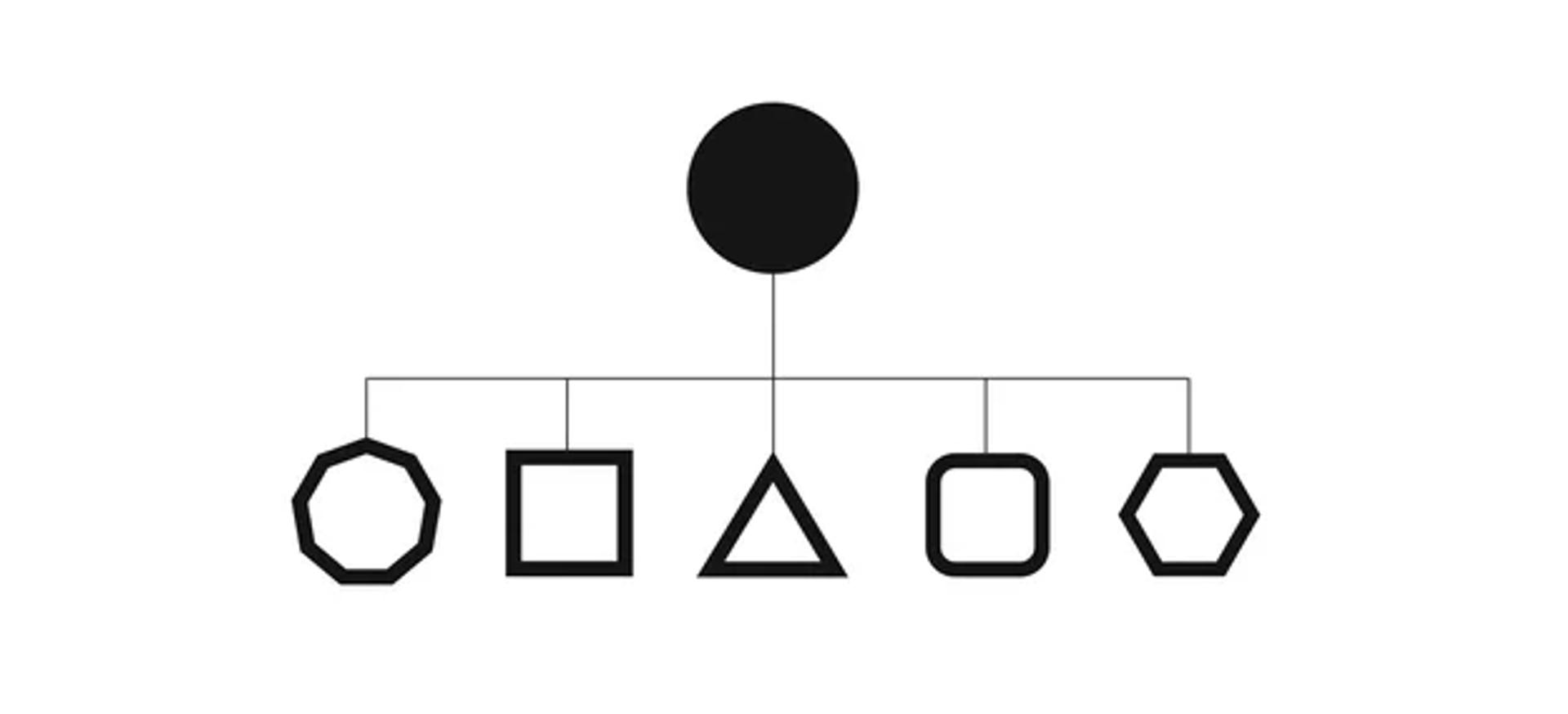
Example: Apple uses a simple branded house approach. Every product carries the Apple name - iPhone, iPad, MacBook. Customers immediately know what to expect from Apple's quality and design standards.
Benefits of Strong Brand Structure
A well-organized brand structure delivers clear advantages for your business.
Stronger Corporate Identity: Your structure makes it easy for customers to identify and remember your brand. Clear connections between products build familiarity. This familiarity creates loyalty.
Better Marketing Efficiency: You can create focused campaigns for specific audiences. Each brand targets its ideal customer. Resources get used more effectively. Marketing messages become clearer and more powerful.
Easier Product Extensions: New products benefit from existing brand trust. Customers already know your quality standards. They're more likely to try new offerings from brands they trust.
Simplified Brand Management: Managing your brand becomes easier across all channels. Social media content stays consistent. Marketing materials align with your strategy. Your team makes better decisions faster.
Higher Brand Value: Strong architecture increases your overall brand equity. Connected brands support each other. Success in one area lifts the entire portfolio.
Source: Verge
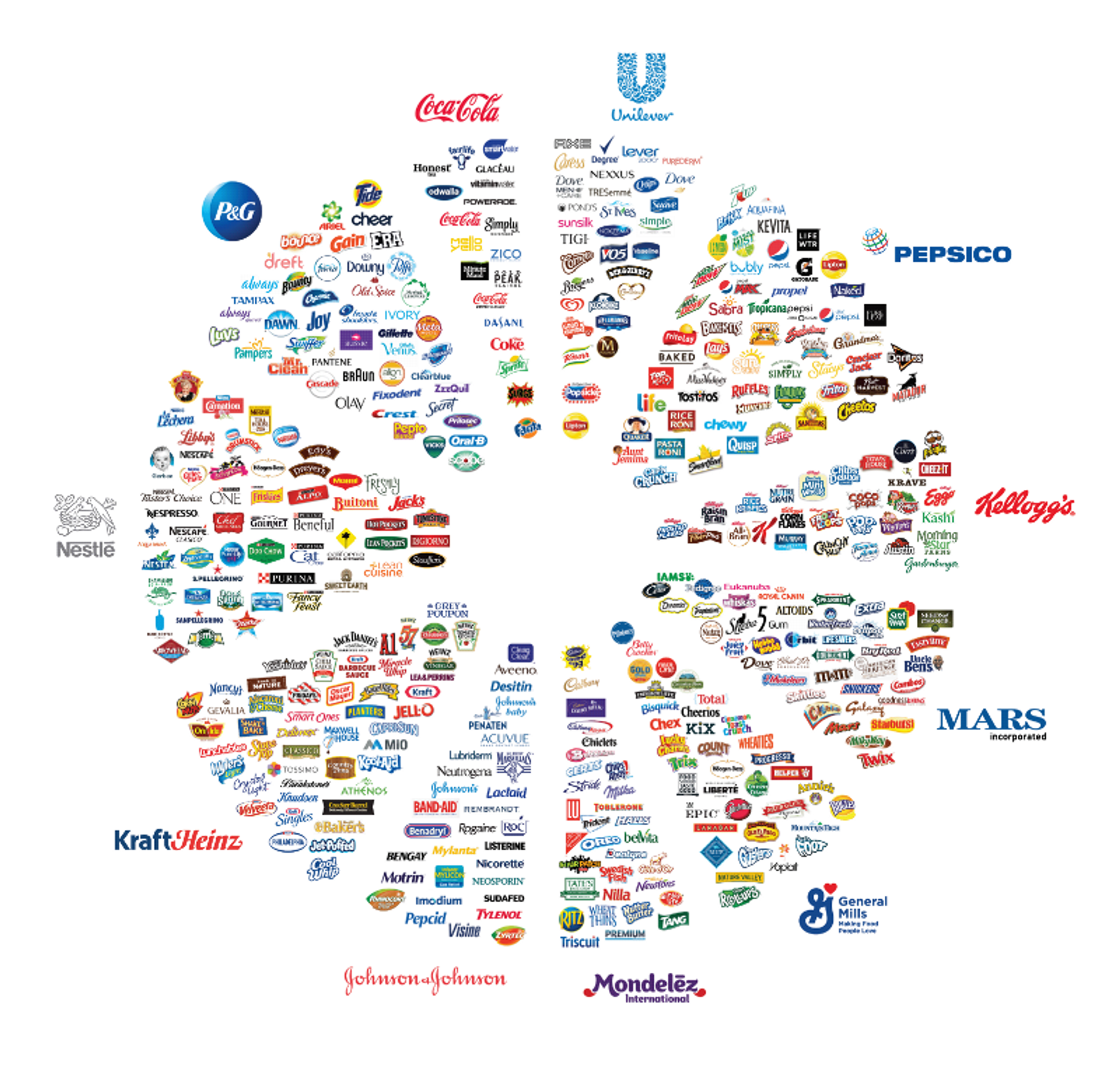
Companies with clear brand architecture see measurable results.
Brand Architecture Framework: Four Main Models
Brand architecture comes in four main types. Each serves different business goals and market situations.
Source: Frontify

1. Branded House
In a branded house model, one master brand covers all products and services. Sub-brands use the parent company's name and visual identity.
How It Works: The master brand dominates every product name. Customers see the main brand first. Sub-brands add specific product descriptions.
Examples:
- Apple: iPhone, iPad, MacBook, Apple TV
- FedEx: FedEx Ground, FedEx Express, FedEx Office
- Google: Google Search, Google Drive, Google Maps
Branded House Benefits: Marketing costs stay lower. One strong brand supports everything. Customer loyalty transfers across products. Brand recognition builds faster. Visual consistency creates trust.
Branded House Challenges: Problems with one product can hurt the entire brand. The master brand might get diluted across too many categories. Rigid structure limits flexibility for different markets.
Source: ignytebrands
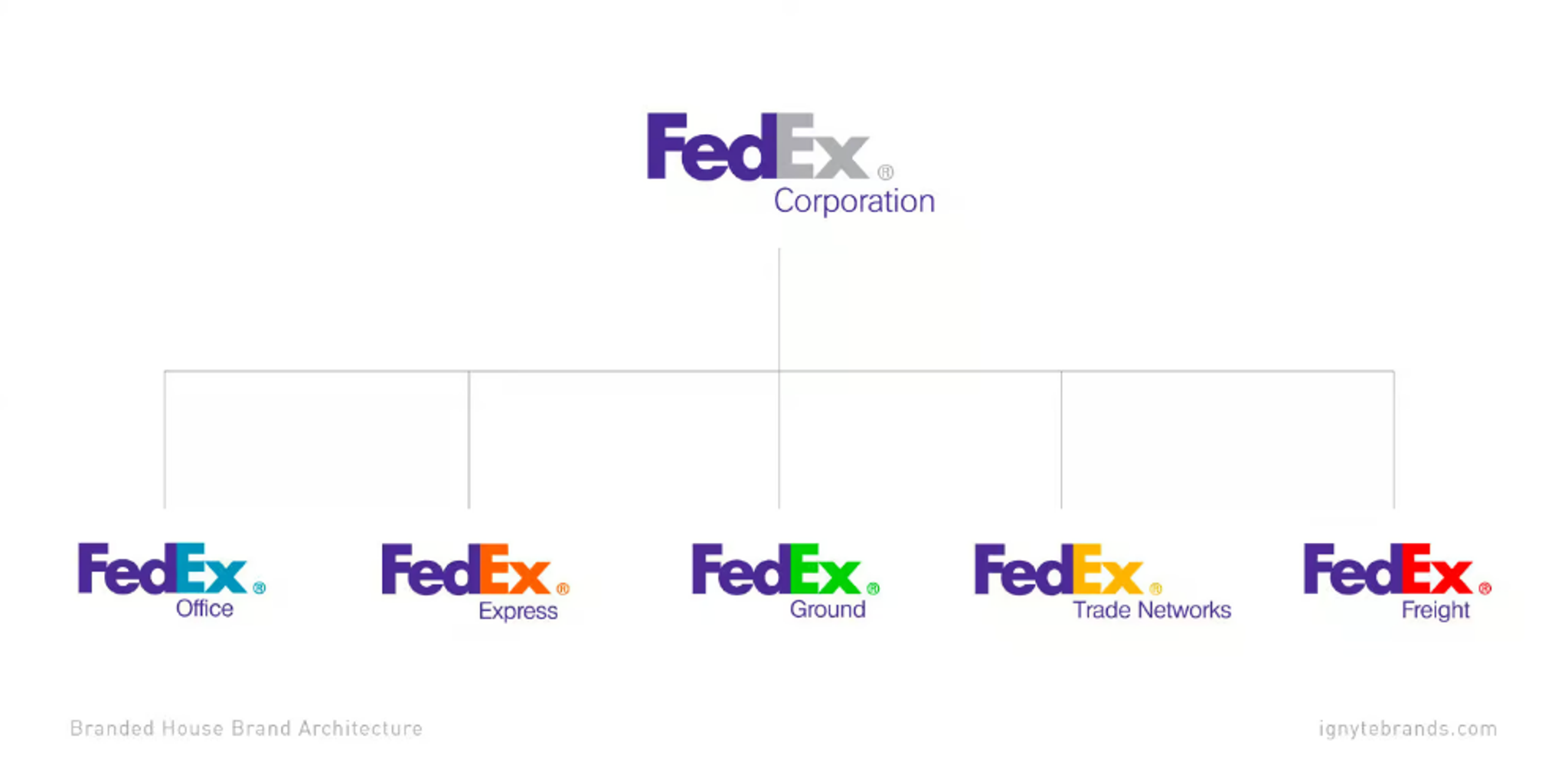
2. House of Brands
House of brands creates separate, independent brands under one corporate owner. Each brand has its own identity and positioning.
How It Works: Individual brands operate independently. Customers might not know they share the same parent company. Each brand targets specific market segments.
Examples:
- Procter & Gamble: Tide, Pampers, Gillette, Crest
- Unilever: Dove, Ben & Jerry's, Hellmann's, Axe
- Berkshire Hathaway: GEICO, Dairy Queen, Duracell
House of Brands Benefits: Each brand targets specific customers precisely. Problems with one brand don't affect others. Companies can enter different markets without confusion. Growth happens through brand acquisition and development.
House of Brands Challenges: Managing multiple brands costs more. Each needs its own marketing strategy. Success in one brand doesn't help others. Resource allocation becomes complex.
Source: CR8 Consultancy
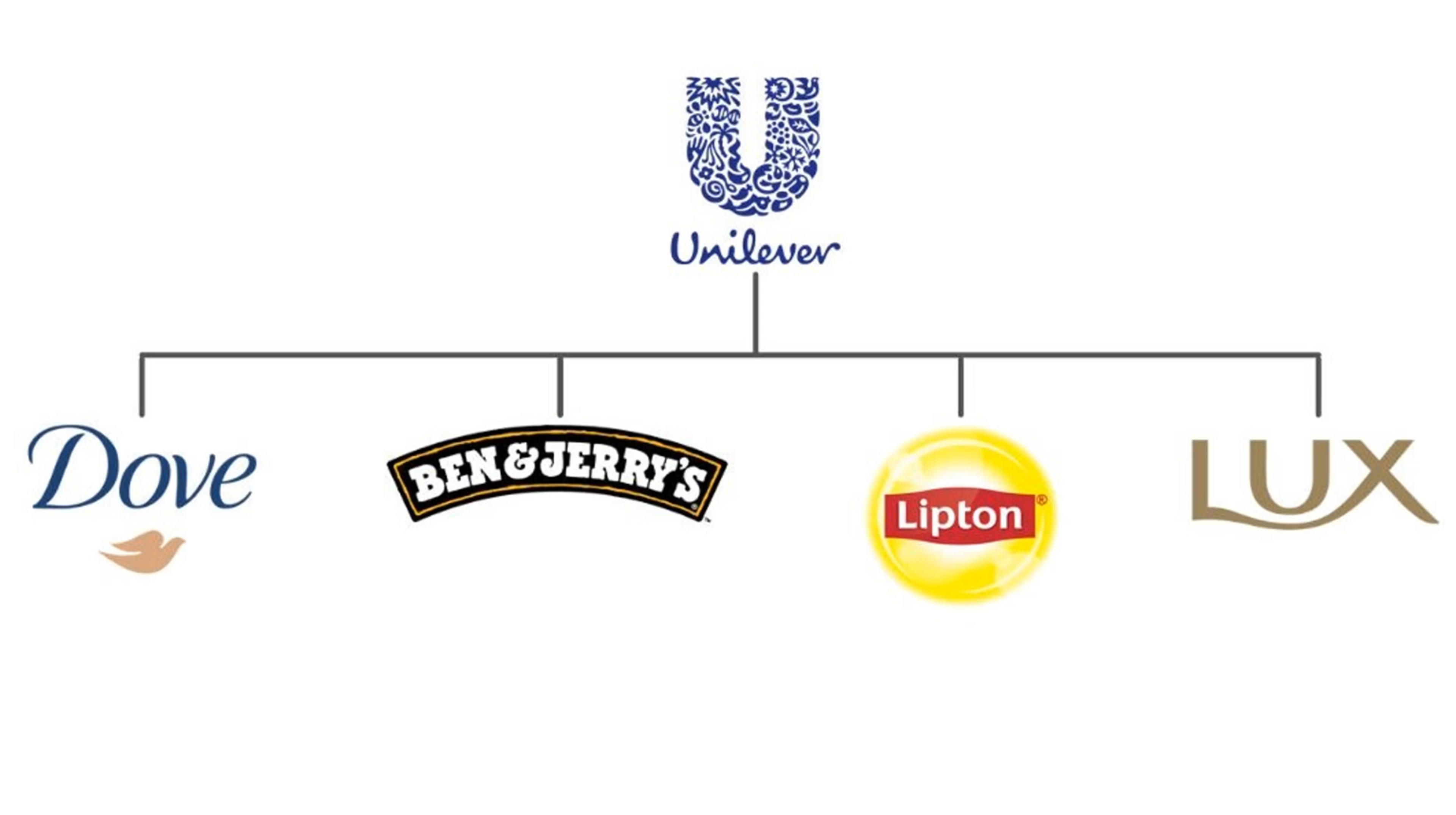
3. Endorsed Branding
Endorsed branding balances independence with association. Sub-brands have their own identities but show a connection to the parent brand.
How It Works: Sub-brands operate semi-independently. The parent brand appears as an endorser or supporter. Visual connections exist but aren't dominant.
Examples:
- Virgin Group: Virgin Atlantic, Virgin Mobile, Virgin Records
- Marriott: Courtyard by Marriott, Residence Inn by Marriott
- Toyota: Lexus (endorsed subtly through dealer networks)
Endorsed Branding Benefits: Sub-brands benefit from the parent company's credibility. Each brand can target different market segments. Parent brand reputation provides security. Flexibility allows unique positioning.
Endorsed Branding Challenges: Strategy becomes more complex. Each brand needs independent marketing. Resource requirements increase. Brand relationships must be carefully managed.
Source: Enigma

4. Hybrid Architecture
Hybrid architecture combines elements from other models. Companies use different approaches for different parts of their business.
How It Works: Some products use a branded house approach. Others operate as independent brands. The structure adapts to market needs and business goals.
Examples:
- Amazon: Amazon Prime (branded house) + Whole Foods (independent brand)
- Google/Alphabet: Google products + YouTube + Nest
- Disney: Disney Studios + ESPN + ABC
Hybrid Benefits: Maximum flexibility for different markets. Companies can optimize each brand's approach. Growth options remain open. Complex businesses get an appropriate structure.
Hybrid Challenges: Management complexity increases significantly. Brand relationships can confuse customers. Resource allocation becomes difficult. Strategy coordination requires careful planning.
Source: EbaqDesign

Key Components of Effective Brand Hierarchy
A strong brand hierarchy requires several essential elements working together.
Clear Audience Definition: Each brand level needs a specific target audience. Know who you're serving, understand their needs and preferences, and create messaging that resonates with each group.
Consistent Visual Identity: Logos, colors, and fonts should connect appropriately. Branded house models need strong visual consistency. House of brands allows more variation. Visual elements should support your chosen architecture.
Aligned Brand Values: Core company values should flow through all brand levels. Sub-brands can emphasize different aspects, but the overall direction must remain consistent. Values guide decision-making across the portfolio.
Strategic Positioning: Each brand needs clear market positioning. Avoid overlap between brands. Create distinct value propositions. Position brands to support overall company goals.
Effective Communication Strategy: Develop messaging frameworks for each brand level. Ensure consistency across all channels. Train teams on the appropriate brand voice. Monitor communications for alignment.
Source: Marketing91

How to Choose Your Brand Architecture Model
Selecting the right model depends on your business situation and goals.
Consider Your Business Model:
- Single product focus? Choose a branded house
- Multiple distinct markets? Consider the house of brands
- Need flexibility? Try endorsed or hybrid approaches.
Evaluate Your Resources: A branded house requires fewer marketing resources, while a house of brands needs significant investment in each brand. Endorsed and hybrid models fall between these extremes.
Assess Your Market Position: Do you have a strong master brand? Leverage it with a branded house. Do you have multiple market segments? A house of brands might work better. Do you need credibility? Consider endorsed branding.
Plan for Growth: How will you expand? Through acquisitions or product development? Different architectures support different growth strategies.
Source: Wondereight
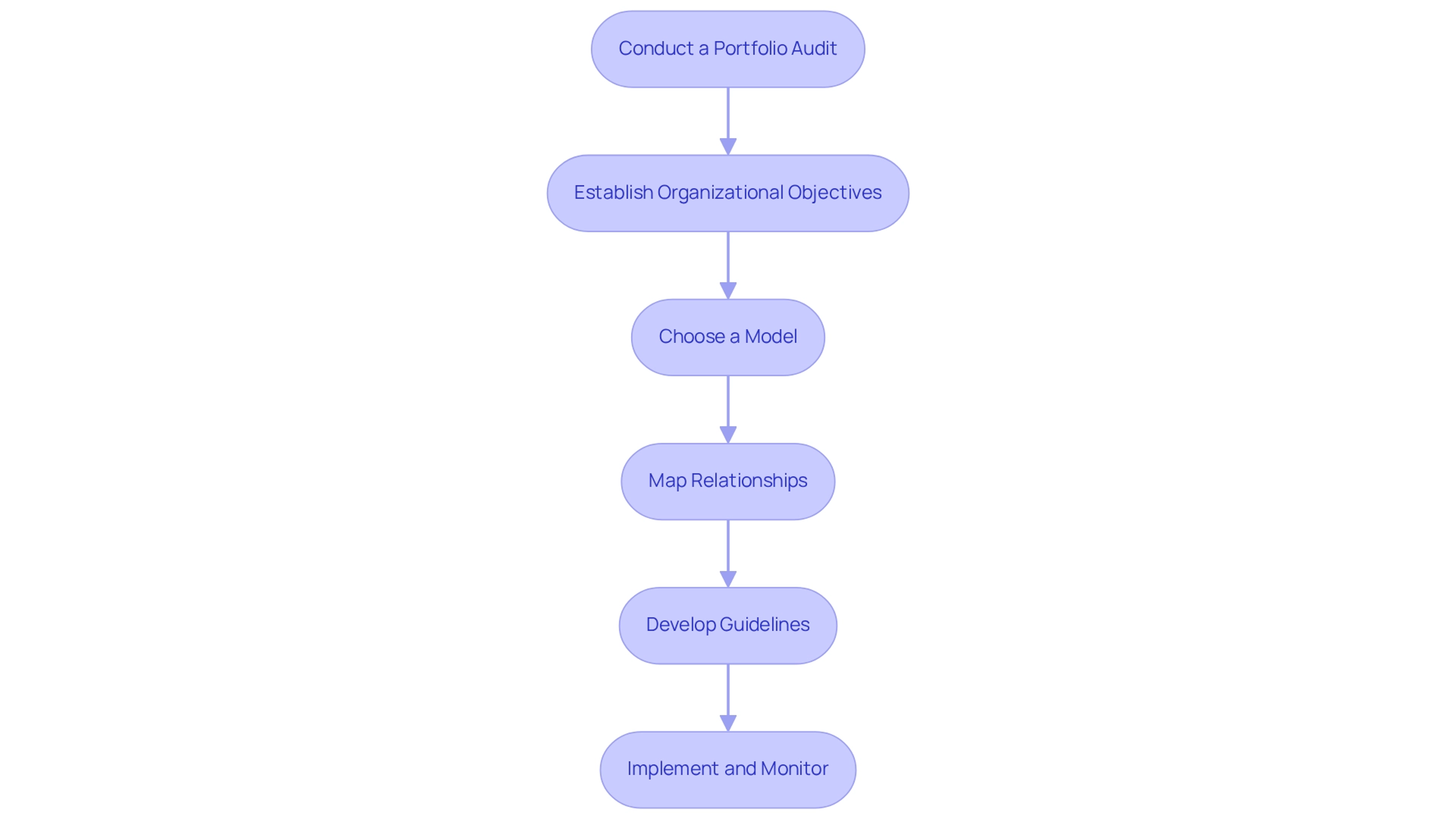
Brand Architecture Implementation Strategy
Building effective brand architecture takes systematic planning and execution.
Step 1: Audit Current Brand Portfolio: List all current brands and products. Map existing relationships. Identify gaps and overlaps. Assess brand strength and market performance.
Step 2: Define Strategic Objectives: Set clear goals for your architecture. Determine target audiences for each brand. Establish success metrics. Create a timeline for implementation.
Step 3: Design Brand Relationships: Choose your architecture model. Define how brands connect. Create visual identity guidelines. Develop messaging frameworks.
Step 4: Execute Rollout Plan: Start with internal team alignment. Update marketing materials systematically. Communicate changes to customers. Monitor performance and adjust as needed.
Step 5: Measure and Optimize: Track brand awareness and recognition. Monitor customer confusion or clarity. Measure marketing efficiency gains. Adjust strategy based on results.
Source: Faster Capital

Common Implementation Challenges
Most companies face similar obstacles when building brand architecture.
Internal Resistance: Teams might resist changes to established brands. Clear communication about benefits helps. Involve stakeholders in the planning process. Provide training and support during transition.
Customer Confusion: Changes to familiar brands can confuse customers. Plan communication campaigns carefully, explain benefits clearly, and make transitions gradual when possible.
Resource Constraints: Architecture changes require investment. Prioritize highest-impact changes first. Phase implementation over time. Measure ROI to justify continued investment.
Consistency Maintenance: Keeping brands aligned over time requires ongoing effort. Create clear guidelines and processes. Regular audits help identify problems early. Train teams on brand standards.
Source: Faster Capital
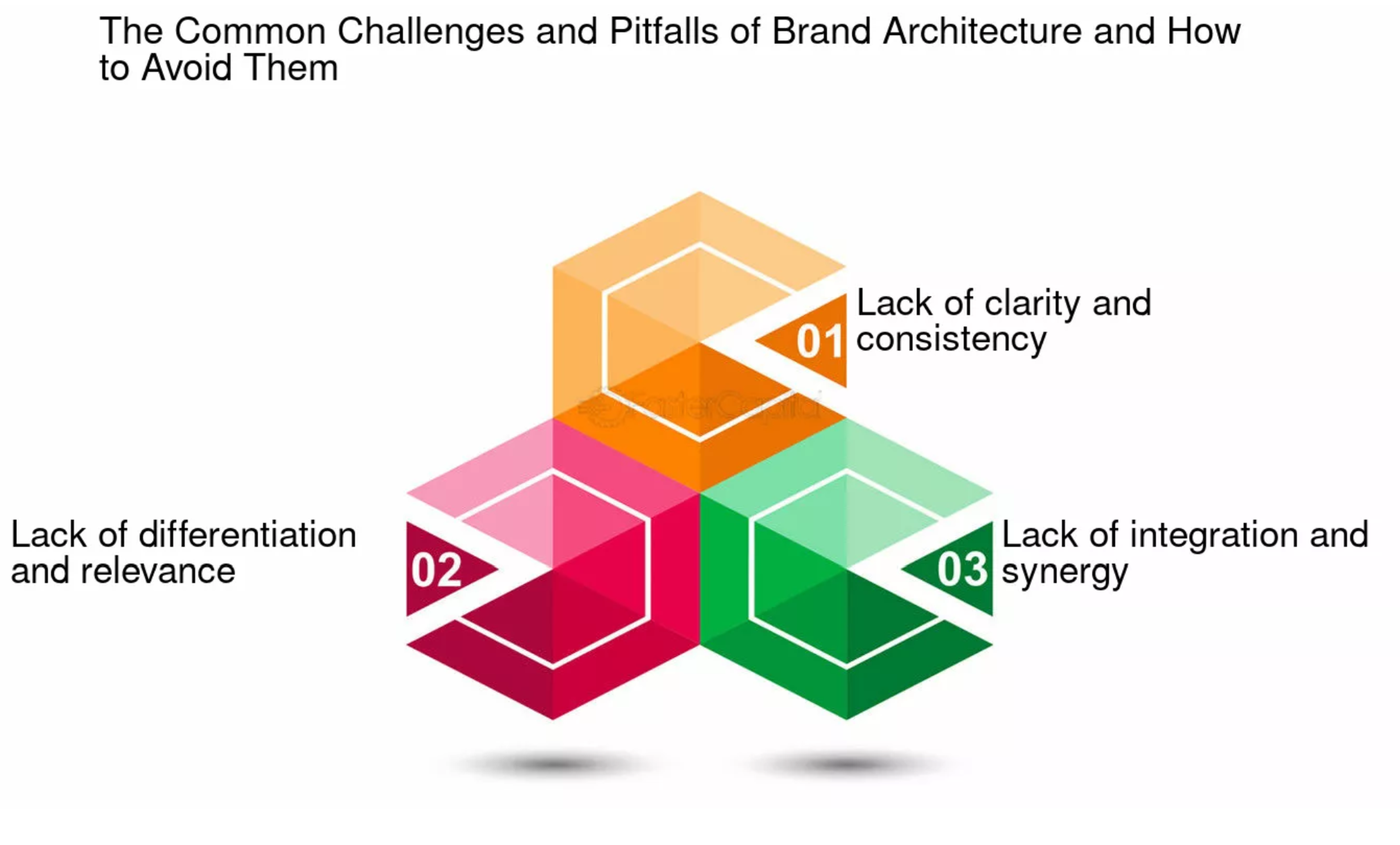
Brand Architecture Success Stories
Real companies show how different models create business value.
Apple's Branded House Success
Using branded house architecture, Apple built one of the world's most valuable brands. Every product carries the Apple name, and customers know exactly what to expect. This approach drives premium pricing and customer loyalty.
Source: The Pull Agency
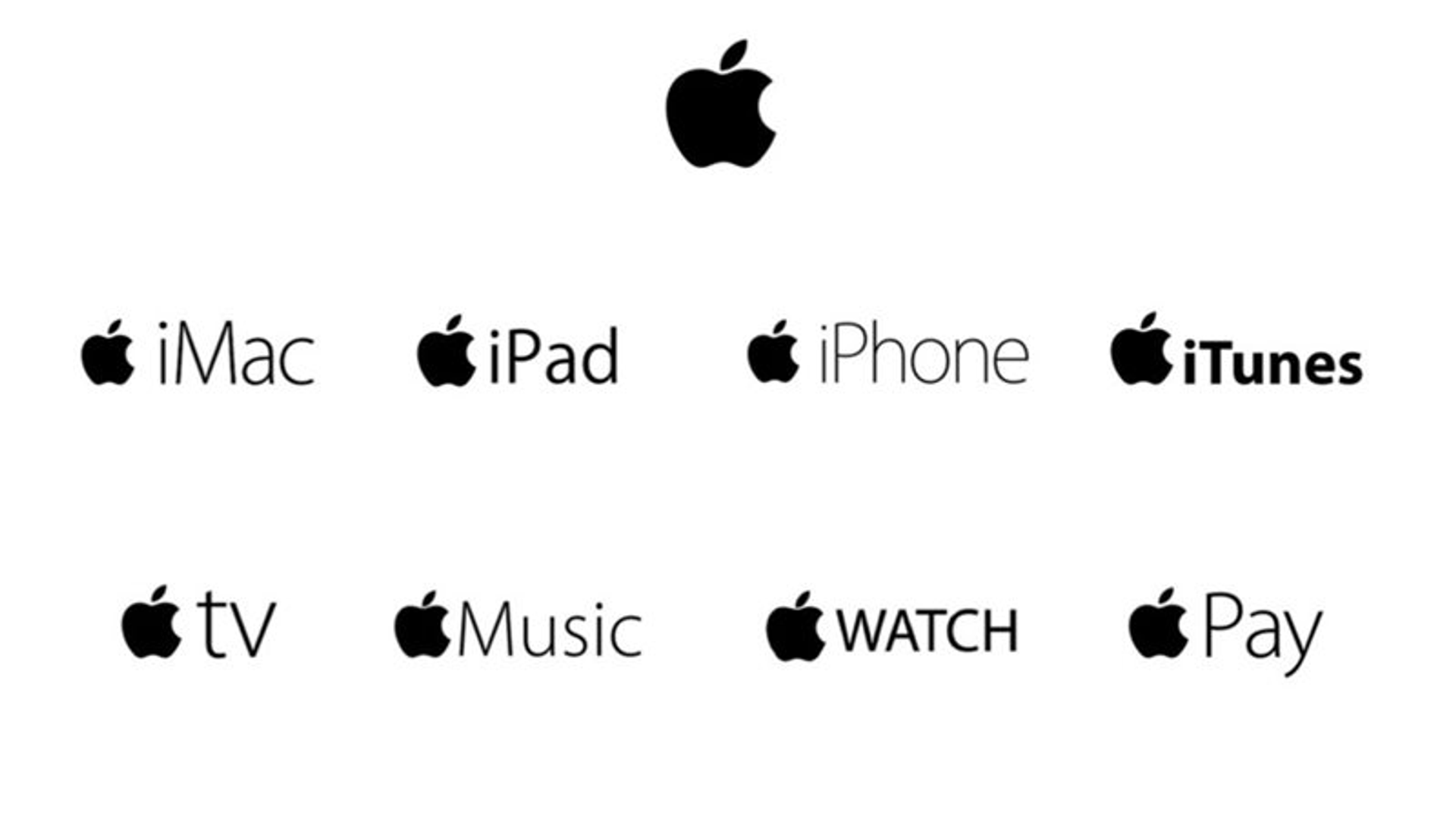
Its brand equity surged by 28% year-over-year, reaching a staggering $1.3 trillion, showcasing the power of strategic brand alignment across all offerings.
Procter & Gamble's House of Brands
P&G manages dozens of billion-dollar brands independently. Each targets specific consumer needs. Tide dominates laundry, and Pampers leads diapers. This strategy lets P&G compete in multiple categories without brand confusion.
Source: Brand Master Academy

It reported trailing twelve-month revenue of approximately $84 billion (mid‑2024), backed by an equally enormous market capitalization of around $400 billion.
Virgin's Endorsed Approach
Virgin Group uses endorsed branding across industries. Virgin Atlantic, Virgin Mobile, and Virgin Records share brand values but serve different markets. The Virgin name provides credibility while each brand maintains its own identity.
Source: Branding Agency Manchester

Virgin Group has expanded into over 200 companies worldwide, spanning industries from music and travel to telecom and financial services.
Future Trends in Brand Architecture
Brand architecture continues evolving with market changes and new technologies.
Digital-First Approaches: Online brands can change architecture more quickly. Digital channels make testing easier, and social media creates new brand relationship possibilities.
Customer Experience Focus: Architecture decisions increasingly consider entire customer journeys. Brands must work together seamlessly, and experience consistency becomes more important than visual consistency.
Agile Brand Strategies: Companies adapt architecture more frequently. Market changes happen faster. Flexible approaches become more valuable.
Data-Driven Decisions: Analytics help optimize brand relationships. Customer data reveals effective structures. Testing validates architecture choices.
Source: Branding Strategy Insider

FAQ
What Are the Brand Archetypes?
Brand archetypes are universal character models that define a brand’s personality, tone, and storytelling style. Based on Carl Jung’s psychology, there are 12 common archetypes (such as the Hero, Creator, and Caregiver) used to create emotional connections with audiences and guide consistent brand messaging.
What Are the Brand Hierarchy Guidelines?
Brand hierarchy guidelines outline how a company organizes and presents its brands, sub-brands, and products. They define naming conventions, visual identity relationships, and communication rules to ensure clarity, consistency, and brand recognition across all levels of the brand structure.
What Is the CBBE Model?
The Customer-Based Brand Equity (CBBE) model, developed by Kevin Lane Keller, explains how to build a strong brand by focusing on how customers perceive and connect with it. The model has four stages (brand identity, meaning, response, and resonance) stacked in a pyramid to show the path to deep brand loyalty.
What Is the Difference Between Brand Architecture and Brand Portfolio?
Brand architecture is the strategic framework that defines how brands and products relate to each other within a company. A brand portfolio is the complete set of brands a company owns. In short, architecture is the structure, while the portfolio is the inventory.
What Is a Brand Building Model?
A brand building model is a strategic framework that explains how to grow and strengthen a brand over time. It outlines stages (such as awareness, positioning, differentiation, and loyalty) and provides guidelines for creating lasting customer relationships and market value.
Read More
Conclusion
The right brand architecture strategy creates powerful competitive advantages. Clear structure helps customers understand your offerings. It helps your team make better decisions. It drives marketing efficiency and brand value.
Implementation requires careful planning and consistent execution. Start with clear goals, build systematically, measure results, and adjust as needed.
With strong brand architecture, your business creates lasting customer relationships and sustainable growth. The investment in structure pays dividends through increased recognition, loyalty, and revenue performance.


About Clay
Clay is a UI/UX design & branding agency in San Francisco. We team up with startups and leading brands to create transformative digital experience. Clients: Facebook, Slack, Google, Amazon, Credit Karma, Zenefits, etc.
Learn more

About Clay
Clay is a UI/UX design & branding agency in San Francisco. We team up with startups and leading brands to create transformative digital experience. Clients: Facebook, Slack, Google, Amazon, Credit Karma, Zenefits, etc.
Learn more


